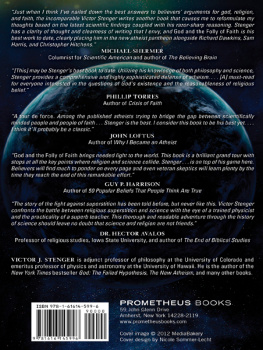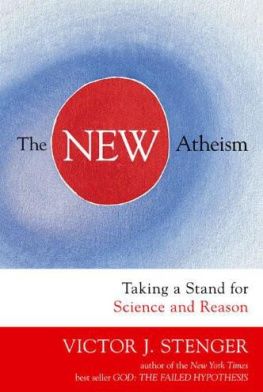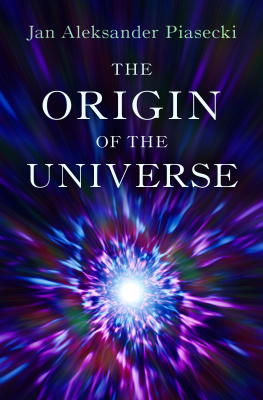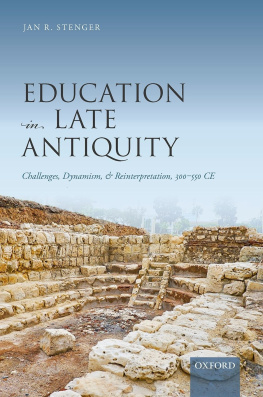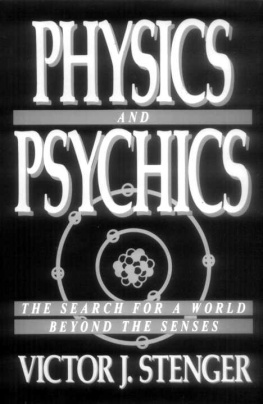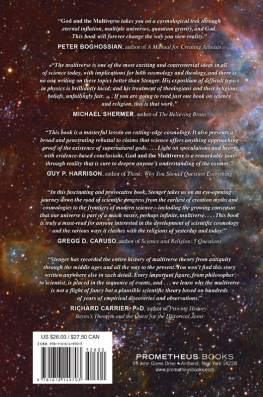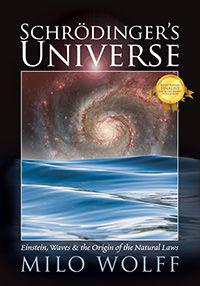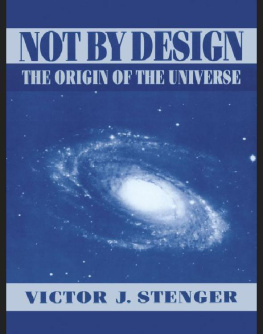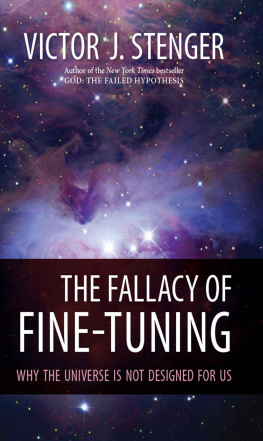References
These books and articles are either referred to directly in the text or were important sources of information or concepts to the author in writing this book.
Albrecht, A.. and P. J. Steinhardt. Physical Review Letters 48 (1980):1220.
Angeles, P. A. The Problem of God. Prometheus Books (1980).
Arons, A. B., and A. M. Bork (eds.). Science and Ideas. Prentice-Hall (1964).
Asimov, Isaac. Asimovs Guide to Halleys Comet. Dell (1985).
Brown, L. M., and L. Hoddeson (eds.). The Birth of Particle Physics. Cambridge University Press (1983).
Cohen, I. B. (ed.). Isaac Newtons Papers and Letters on Natural Philosophy. Harvard University Press (1958).
Cooper, L. N. An Introduction to the Meaning and Structure of Physics. Harper and Row (1968).
Durant, W. The Story of Philosophy. Simon and Schuster (1953).
. The Story of Civilization. Simon and Schuster (1944).
Ferris, T. The Red Limit. William Morrow (1977).
Frautschi, S. Entropy in the Expanding Universe. Science 217 (1982): 593. Freund, Philip. Myths of Creation. W. H. Allen (1964).
Guth, A. H. Physical Review D (1981): 23.
Hoyle, F., and C. Wickramasinghe. Evolution from Space. J. M. Dent and Sons (1981).
Kargon, R. H. Atomism in England from Hariot to Newton. Clarendon Press (1966).
Linde, A. D. Physics Letters B 108 (1982): 389.
Lucretius. The Nature of Things. Translation by F. O. Copley. W. W. Norton (1977).
Mason, S. F. A History of the Sciences. Routledge and Kegan Paul (1953).
Pais, A. Subtle is the Lord. Oxford (1982).
Segre, E. From X-Rays to Quarks. Freeman (1980).
Snyder, E. E. A History of the Physical Sciences. Merrill (1969).
Tryon, E. P. Is the Universe a Vacuum Fluctuation? Nature 246 (1973): 396.
Weinberg. S. The First Three Minutes. Basic Books (1977).
Suggested Reading
These books and articles were not major sources for the author, but present many of the issues discussed in the text in nontechnical language.
Calder, N. The Key to the Universe. Penguin (1977).
Davies, P. C. W. The Accidental Universe. Cambridge (1982).
. Relics of creation. Sky and Telescope 69, no. 2 (February 1985): 112.
. New Physics and the New Big Bang. Sky and Telescope 70, no. 5 (November 1985): 406.
Eddington, Arthur. The Nature of the Physical World. Cambridge (1928).
Freedman, D. Z., and P. van Nieuwenhuizen. Supergravity and the Unification of the Laws of Physics. Scientific American 238, no. 2 (April 1978): 126.
. The Hidden Dimensions of Spacetime. Scientific American 252, no. 3 (March 1985): 74.
Georgi, H. A Unified Theory of Elementary Particles and Forces. Scientific American 244, no. 4 (April 1981): 48.
Guth, A., and P. J. Steinhardt. The Inflationary Universe. Scientific American 250, no. 5 (May 1984): 116.
McGowan, C. In the Beginning ... Prometheus Books (1984).
Odenwald, S. Does Space Have More Than 3 Dimensions? Astronomy 12. no. 11 (November 1984): 66.
Pagels, H. Perfect Symmetry. Simon and Schuster (1985).
Ruse, M. Darwinism Defended. Addison-Wesley (1982).
Sciama, D. W. The Physical Foundations of General Relativity. Doubleday (1969).
Silk, J. The Big Bang. Freeman (1980).
Order by Chance
We had the sky, up there, all speckled with stars, and we used to lay on our backs and look up at them, and discuss about whether they was made, or only just happened.
Mark Twain, Huckleberry Finn
In the days before city lights and air pollution obscured the view, the pageant of the heavens was the nightly experience of everyone. Early sky-watchers were so impressed by the orderly movement of the sun, moon and stars across the sky that they thought of heaven as a world more perfect than the one they walked upon. On earth a storm or earthquake might strike without warning and create great destruction. A man might be healthy one day and dead the next, of accident or disease. There was an unpredictability of events on earth not reflected in the sky.
As people became civilized, they learned to use the more certain movements of the heavenly bodies to predict events on earth, such as the change in seasons and the Nile flood. By observing the location along the horizon at which a certain star rose, they could determine the best time to hunt or to plant, and more dubiously, when to go to war. The people who could read the heavens were more powerful than their kings. Though their knowledge was riddled with superstition and meaningless ritual, these ancient priests gave mankind the first measure of control over the environment and began the development of science that over a few short millennia has changed the world.
If much of the world around us seems chaotic and unpredictable, there is also rhyme and reason on earth. A ball tossed in the air will follow a smooth parabolic path back to earth. Water runs downhill and not up. Living things reproduce their enormous complexity with great precision. The regular movement of celestial bodies and the predictable phenomena that we see on earth give us confidence that we live in a universe that is basically orderly.
As we observe our surroundings, bits of data representing patterns of light or sound, smell, taste, or touch, are collected and organized in our brains to form the basis of concepts about the world. We invent notions of space, time, mass, and energy to help us classify this great flow of data. These bits do not appear to be random; they occur in patterns that our brains somehow are able to detect. Many of the patterns we observe are simple, like the arc of the suns path, but most are intricate and complex.
This orderliness, and especially the intricate structure and enormous variety of life, is often taken as evidence for a grand designan intelligence beyond our experience that is responsible for the patterns of the universe. How is it possible that all this could have happened by chance? people ask. This question often serves as a common justification for faith in a supreme being. Even in modern science, where gaps in our knowledge of the natural world are no longer filled in with theology, the lexicon has a built-in prejudice: the universe is governed by a set of rules, or laws of nature, that have always existed. Scientists speak of the Law of Inertia or the Second Law of Thermodynamics as if some great legislature in the sky once met and set down rules to govern the universe. This prejudice is primarily the product of our cultural traditions and is unjustified by the factual data that the universe presents to our senses.
The existence of order does not necessarily imply that it is the result of design. If parts of the universe now exhibit a certain structure, and if there are patterns that can be described by scientific principles, this order still could have just happened. Furthermore, it probably did. Nothing currently known about the universe requires that its structure was somehow imposed upon it from the outside. The joint efforts of physicists and cosmologists are now converging on a picture of how the patterns now observed could have come about as a natural process, accidental and devoid of plan.
Let us begin by clarifying what is meant by order. Even the cards dealt from a shuffled deck have an order or sequence once they are laid out on the table; but what we generally mean by order is a perceived pattern in otherwise random events. How do we decide that a pattern exists? Usually we make an instinctive and highly subjective judgment that what we see is too unlikely to have happened by chance. In principle, though, the pattern can simply be the observation of improbable but still possible occurrences. Whether a possible event is then observed to occur is a matter of chance. Highly likely events are observed more often, but highly unlikely events can also occur. Play enough poker hands and one day you will be dealt four aces or a royal straight flush.


